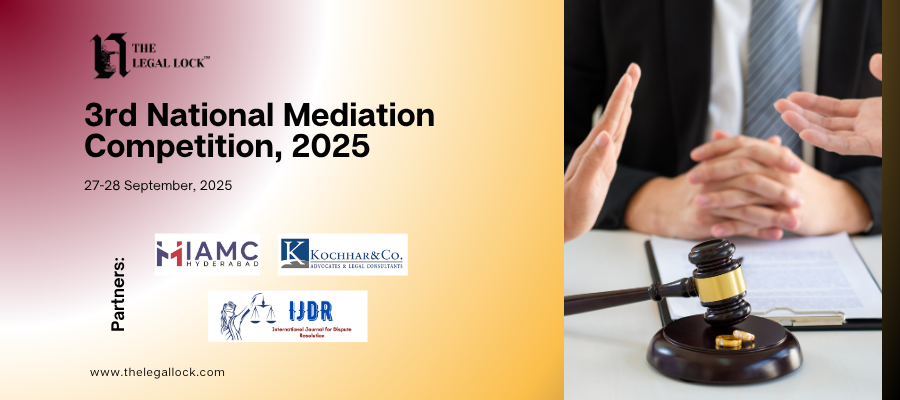Trespass to person and its essentials

INTRODUCTION
It is often seen that one wants to protect one’s body and property, whether movable or immovable. Trespass to a person is an intentional tort and it is an intentional interference with any person’s body or liberty. It can occur even when there is no physical harm to the body of the plaintiff. There are three main wrongs under this category: Assault, Battery, and False Imprisonment.
Trespass is a wide topic involving both civil and criminal elements. What distinguishes criminal trespass from civil trespass is that in the former, the entry should be with intent to commit an offense or to intimidate, insult or annoy the person in possession of the property.
Trespass is considered an ancient set of wrongs. It deals with direct interference, but and through tangible objects. The law of trespass has more of its origin in criminal law. But, in civil law also trespass comes under the law of torts. The Law of trespass is the basis of civil liberties at present.
The trespasser violates the right of another and alters it to cause unlawful loss or benefit, as the situation may be. It is deemed purposeful even if the perpetrator was unaware that the property belonged to someone else. It is important to remember that intent is a necessary component of trespass. The mala Fides and the ulterior motive to torment another cause unreasonable behavior.
TYPES OF TRESPASS TO PERSON
There are three types of trespass to a person. These are:-
- Assault
- Battery
- False Imprisonment
ASSAULT: TRESPASS TO A PERSON
Assault is the causing of unreasonable apprehension or fear of bodily injury in the mind of another person. It is when the defendant creates a reasonable apprehension in the mind of the plaintiff that he is going to hurt him physically or by any other damage.
The wrong is to create an apprehension of harm rather than harming. It can be used to make certain acts and signs suspicious of an assault by another person. It might be direct or indirect. It might be carried out by the individual or by a third party.
A few examples are: Pointing an unloaded pistol where another person does not know it is unloaded. Showing a knife to another person also constitutes assault. The test is whether reasonable apprehension can be created in the mind of the plaintiff or not.
Essentials of assault
There are four essentials for assault. To constitute the assault of tort, all these four conditions are needed to be fulfilled. These include:
- Intent
- Apparent ability to carry the threat
- Apprehension
- Knowledge of threat
Intent forms an essential part of the assault. It is required that the defendant must have the intention to create reasonable apprehension. If intent to do wrong cannot be proved, there is no assault. It is upon the plaintiff to prove the mala fie on part of the defendant.
The second is the apparent ability to carry out the threat. The defendant should be in power to carry out that threat. If a person on a moving train shows a fist to someone outside the train, there will be no assault. This is because the defendant does not have any apparent ability to carry out the threat. He can not hit the plaintiff from a moving threat. It is required that the threat should be imminent.
The third is apprehension. It is required that the act of the defendant creates a reasonable apprehension in the mind of the plaintiff. The plaintiff should be able to apprehend that he is in danger or there is the possibility of some damage.
Fourth and the last one is knowledge of the threat. Plaintiff should know about the threat. If a person puts a gun from behind but never pulls the trigger, it cannot be assaulted because the plaintiff does not know of it.
Case Law for assault
There is a case of Stephens v. Myers[1]. The plaintiff, in this case, was a Chairman at a Parish meeting. The defendant also sat at the same table but there were 6 or 7 persons between them. In the course of some angry discussion, the defendant had been vociferous and he interrupted the proceedings of the meeting. A very large majority decided that the defendant be expelled from the meeting.
The defendant advanced toward the Chairman with a clenched fist saying that he would rather pull the Chairman out of the chair than be turned out of the room. But, he was stopped by the churchwarden who sat next to the Chairman. He was held liable for assault.
Battery: TRESPASS TO A PERSON
The battery is the second type of trespass to the person. It is the next stage of the assault. It generally succeeds in assathe ult. The battery is the use of force on another person without lawful justification and is defined as directly or indirectly, but slightly, contacting another person hostilely or against his will.
Essentials of battery are:-
- Use of force
- Without lawful justification
The first and foremost requirement of a battery is that there should be the use of force. The use of force can be direct or indirect. It is irrelevant if the force is trivial or not. It is also irrelevant if the force created any injury or damage. What is required is that there should be the use of some force. Physical force is there.
It was held in Cole v. Turner[2] that the least touching in anger is the battery. If two persons are crossing a narrow bridge and they gently touch the way, it is not the battery. But, if a person intentionally and voluntarily pushes another, it is the battery.
The second requirement is that the use of batteries should be without lawful justification. For example, if a policeman touches another person in performing his duty, it cannot be said battery. But, if the same policeman pushes another person unlawfully, it will constitute a battery.
In Stanley v. Powell[3], Powell, who was a member of the shooting party, fired at a pheasant. But, the pellet from his gun glanced off a tree and accidentally wounded Stanley, another member of the party. Court held that Powell was not liable.
False Imprisonment: TRESPASS TO A PERSON
False imprisonment is the total restrain of a person for some period without any lawful justification. It occurs when someone’s path is unlawfully limited from all available directions to prohibit him/her from traveling in a direction for some amount of time, however brief and it is described as wrongful confinement in the Indian Penal Code.
To constitute false imprisonment, imprisonment in the ordinary sense is not required. Restraining movements of a person completely within four walls or in open ground is false imprisonment. It is also when a man is forced by a threat to not leave the house. He may be enjoying himself inside but this restraint constitutes false imprisonment.
Essentials of false imprisonment
There are mainly two essentials of false imprisonment:-
- There should be total restraint.
- It should be without any lawful justification
The tort of false imprisonment is constituted when there is total restraint. To constitute this wrong, a person must have been completely deprived of liberty to move beyond certain limits. If a man is prevented from going in one direction but is allowed to go back, there is no false imprisonment.
A part of a public footway, as opposed to a carriageway, was wrongfully enclosed by the defendant in Bird v. Jones[4]. Seats were put there and entry was closed. It was allowed only those who made payment to watch the rowing there.
The claimant asserted his right to use the bridge but was stopped there. He remained there for about 30 minutes. Plaintiff subsequently brought an action for false imprisonment. It was held that there is no false imprisonment as he was allowed to go back.
Restraint should be without any lawful justification. If there are means of escape, it cannot be termed as total restraint. However, such means should be reasonable and intelligible to the person detained. If the window providing escape is so high, that it will cause injury, means is not reasonable and there is total restraint.
Knowledge of the plaintiff
There have been different opinions on whether knowledge is necessary or not.
It was held in Herring v. Boyle[5], that knowledge is essential. In this case, the schoolmaster wrongfully refused the schoolboy to go with his mother unless his mother paid the school fees. This conversation was between the mother and headmaster. The boy did not know about this conversation. It was held that boy did not know his restraint, so it is not false imprisonment.
It had been held in Meeting v. Graham White Aviation Co.[6] that knowledge is not an essential element. The plaintiff, an employee of the defendant company was suspected of having stolen the company’s property. He was called to the office and was asked to sit in the waiting room. One or two employees remain outside the room where he was seated. In the meantime, the police were called and the plaintiff was arrested on a charge of theft.
It was held that police were merely doing their duty. While the defendant was liable for false imprisonment. Although he did not know he was restrained, his image was degraded because the outside sitting employees might have sad ill things. Knowledge of the plaintiff is not necessary.
CONCLUSION
Assault is an attempted offense; the law is meant to prevent possible violence by penalizing behavior that dangerously leads to the battery. As with most attempted crimes, a clear distinction cannot be made between a criminal attack and an action that is just preparation for an assault.
There must be a purpose to inflict harm, but this is insufficient if it creates the prospect of damage or battery threat in the future. Instead, the purpose must be removed from any overt behavior that endangers the battery. As a result, mere words or intentions do not constitute an assault. False imprisonment is total restraint. It can be mental or physical. Restraint should be without any lawful justification.
[1] Stephens v. Myers (1830) 4 C and P. 349.
[2] Cole v. Turner 87 E.R. 907
[3] Stanley v. Powell (1891) Q.B. 86.
[4] Bird v. Jones (1845) 7 Q.B. 742.
[5] Herring v. Boyle 149 ER 1126.
[6] Meeting v. Graham White Aviation Co (1920) 121 L.T. 44










